On Wednesday, September 27, 2017, I went to a coffee tasting that was focused on the education of learning and understanding the sensory references when describing coffee. This was an ambitious coffee tasting – the kind of thing that true coffee masters who hope to make a career in coffee might do.
Starbucks Coffee Master Andrea D. is an experienced coffee master who has been in three different states, several stores, and really knows what it takes to wear the black apron. I first met “Starbucks Andie” in Fullerton, California, when she was just a 5-month partner in 2014. It is stunning how she’s learned so much about coffee, Starbucks, and the culture and the history of the company in just 3 quick years. From California, she transferred to a Starbucks in Boston. And from Boston, she transferred to Seattle, Washington, ending up at the First and University Reserve Bar, a Starbucks with an elevated store experience. Her curiosity about the company and coffee is unmatched. Always be curious! 🙂
Let’s establish a few cornerstones of this kind of unique coffee tasting: The focus is on the “sensory references” vis-à-vis the actual coffee you’re drinking.
To be able to participate in or conduct this kind of coffee education seminar, you’ll need to understand what is the language we use to describe coffee and what does it really mean.
Here are few links to get you started – you almost can’t do this kind of coffee event without taking some time to understand the Specialty Coffee Association Flavor Wheel and its references:
The Specialty Coffee Association Flavor Wheel
World Coffee Research – Sensory Lexicon
A Research Article on the Development of a Living Lexicon for Coffee
Imagine that you’re enjoying a coffee and you think it tastes ‘nutty’. What does that mean? Is it more of an almond nutty or a peanut nutty or something else? Are chocolate, cocoa, or dark chocolate flavors all the same thing? No, they’re not. And experts in the field have determined that certain descriptions, like “citrus” have extremely specific references. The Sensory Lexicon tells you that half a gram of lemon peel with half a gram of lime peel will give you a “citrus” flavor. So when you say that you’re tasting citrus, that’s your reference point. What if you thought you smelled or tasted “orange”? What does that mean? The reference for orange is Tropicana Pure Premium Original 100% No Pulp Orange Juice.
Over time, as your skill in tasting flavors begins to match flavors that are exactly on point with the references, you then develop the skill set to taste and describe coffee generally, regardless of who the coffee roaster is, or the growing region, or any other number of variables.
To set up this kind of coffee tasting, you would pick 2 or 3 coffees that you are already very familiar with – they’d need to be coffees that you already have a pretty clear understanding of what the flavor descriptors are, and hopefully have at least a couple of obvious flavor notes.
Coffee Master Andie picked these three coffees:
- Core Sumatra
- Micro Blend No. 11
- Micro Blend No. 21
Next, pick out some references that go with the coffees you chose. This will require that you analyze the World Coffee Research – Sensory Lexicon for references and then you go buy specific products.
One reference from the Sensory Lexicon which is associated with Sumatra is potting soil. As it turns out, potting soil is “earthy.” You’d look for Miracle Gro Potting Mix Soil as your sample. (Obviously, don’t eat the potting soil, but the aroma gives you the correct reference for “earthy”.)
Do you want to highlight what “dark chocolate” is as a reference? You’d buy Lindt 90% Dark Chocolate.
Coffee Master Andie selected 5 references:
- “Dark Chocolate” – Lindt 90% Dark Chocolate
- “Berry” – Private Selection Triple Berry Preserve
- “Citrus” – Lemon peel and lime peel
- “Earthy” – potting soil
- “Herb-like” – A mixture of bay leaves, thyme, and basil
At this point, you’ve set up the basic game – Which references go with which coffees? To make it challenging, don’t tell your tasters which coffees you’re using until after they’ve made their guesses of which reference is associated with which coffee.
Andie used little Reserve tasting cups and kept track of which coffees went in which cups, and then put a circle or square on a cup (and one cup was unmarked) to distinguish one sample coffee from the next.
All of the 3 coffees were brewed via a coffee press.
You can see, that’s one intense coffee education seminar! It was really fun to figure out which coffee went with which references! I think it’s very ambitious to use 3 coffees and 5 references. I think this could be just as fun with 2 coffees and 3 or 4 references.
I snapped photos during the coffee event. Enjoy an assortment of pics below. If you do try this in a store, please tell me about it!
Credit for the lead image (the coffee flavor wheel with the cutting board and references) goes to the Starbucks at First and University store Instagram. This store offers coffee education (open to the public!) every Wednesday night at 6:30 PM.
Related posts
1 Comment
Leave a Reply Cancel reply
You must be logged in to post a comment.
Sponsors
Recent Comments
- DEVIN on Compostable Straws Land in Seattle Starbucks Stores
- coffeebeanz on Why do you go to Starbucks less often? (If that’s true for you)
- Willi on You can now buy a Siren statue: $6,000
- Willi on A major revamp of your drink recipe: Testing syrup extracts and cane sugar
- Skip on Why do you go to Starbucks less often? (If that’s true for you)



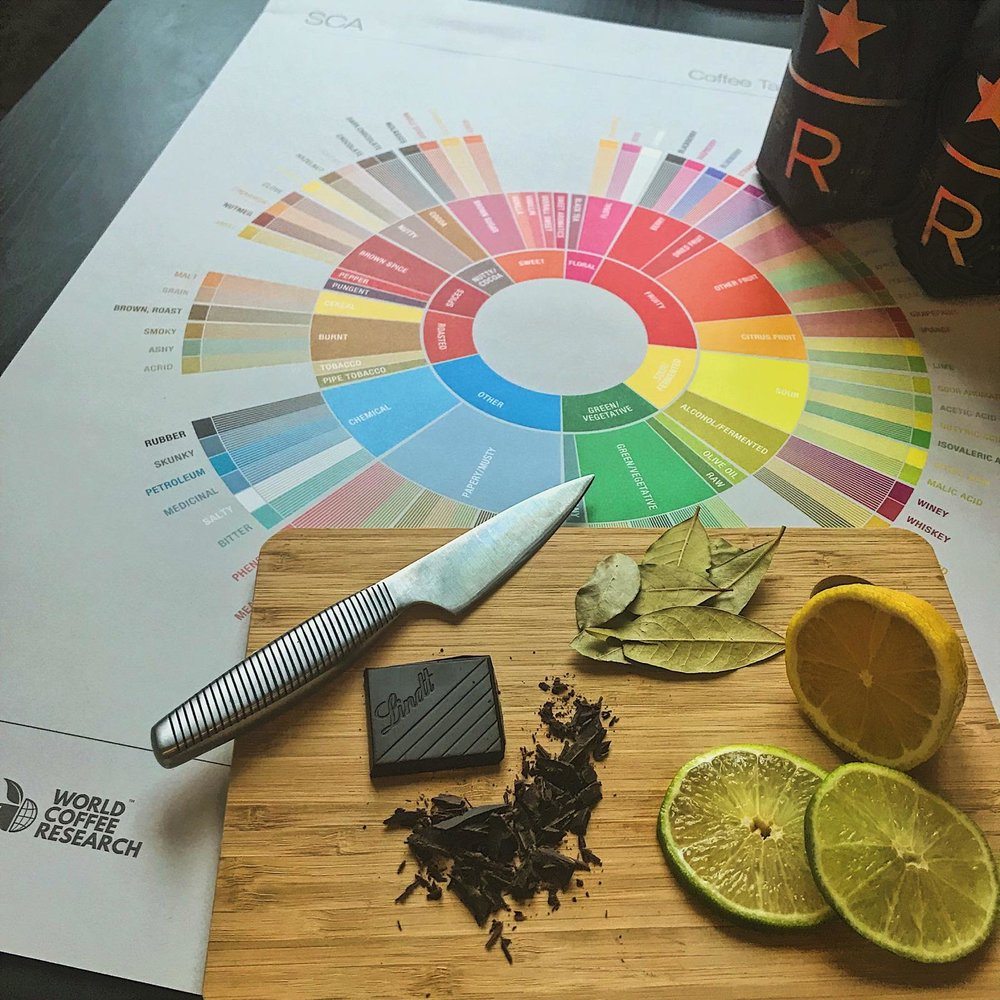
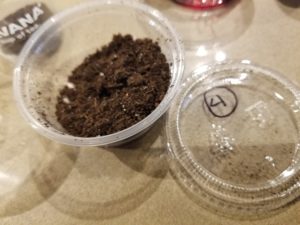

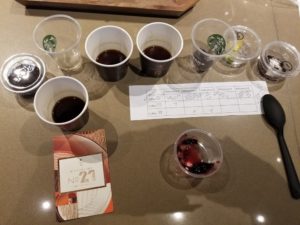
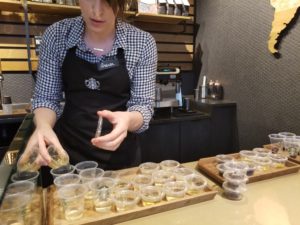
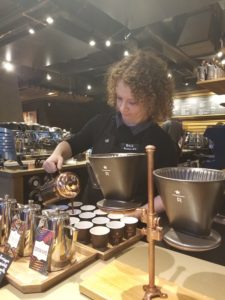
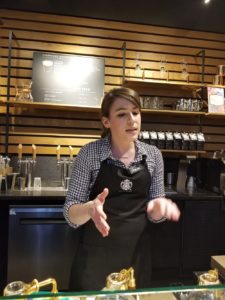
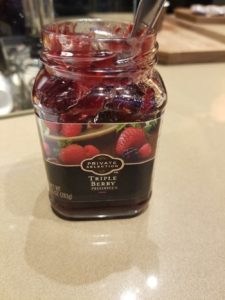
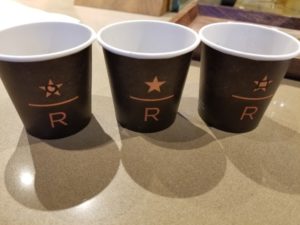
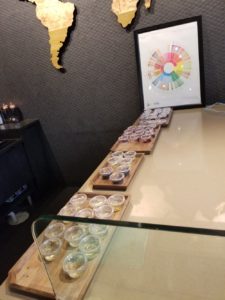
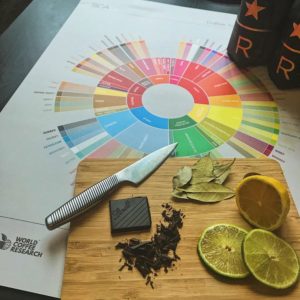



I will be doing something similar to this but for the first sip of Christmas Blend at my store manager Summit. Thanks for sharing this as it is great to see what others have done. Really inspired me. ❤️☕️